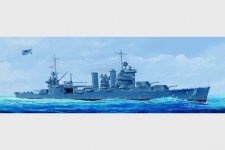Kagero 95002 The Japanese Aircraft Carriers Sōryū and Hiryū EN
Hard Cover Series No 2 The Japanese Aircraft Carriers Sōryū and Hiryū
Mirosław Skwiot
ISBN 978-83-64596-52-0
• 100 stron• 82 archiwalne zdjęcia • 30 rysunków• 16 rzutów bocznych• 1 mapa• format (210x297 mm)• twarda okładka•
„Hiryū” był drugim obok „Sōryū” lotniskowcem uwzględnionym w japońskim „Drugim Programie Uzupełnienia” z 1934 roku. Oryginalnie obie jednostki był projektowane jako identyczne – bliźniacze – jednak jak pokazała historia, zmiany wprowadzone w toku budowy „Sōryū” i później sprawiły, że pomiędzy nimi powstały duże różnice. Początkowo „Hiryū” planowano ukończyć w rok po „Sōryū”, jednak jego budowa tak jak poprzednika przeciągała się w czasie, a to za sprawą dwóch głównych wydarzeń. Pierwszym z nich były świeżo co zebrane doświadczenia z trwającej właśnie przebudowy „Kagi”. Drugim było wejście do służby „Sōryū”, który ujawnił już swoje pierwsze wady i mankamenty. Jeśli do tego uwzględnimy wypadek 4. Floty oraz planowane odejście Japonii od ustaleń traktatowych, to możemy teraz zobaczyć, ile spraw „po drodze” wpłynęło na opóźnienie jego budowy i zmiany w dotychczasowym projekcie. Główne spowolnienie budowy wiązało się z wypadkiem 4. Floty, wtedy to Biuro Lotnictwa Morskiego zamówiło zmiany w projekcie drugiej jednostki. Dotychczasowe plany „Sōryū” zmodyfikowano i na ich bazie opracowano projekt końcowy „Hiryū” G-10 („Projekt podstawowy G-10”).
ISBN 978-83-64596-52-0
• 100 pages• 82 archive photos• 30 drawings• 16 Colour profiles• 1 map• format (sizes): (210x297 mm)• matte coated paper• hard cover binding
As mentioned in the previous chapter, Hiryū was the second aircraft carrier included in “The Second Naval Armaments Supplement Program” of 1934. Originally both carriers were supposed to be sister vessels, but the number of design modifications introduced during the construction of Sōryū resulted in many differences between the two. According to the original plans Hiryū was to be completed a year after Sōryū, but her construction (similarly to her predecessor) suffered delays caused by two key factors. The first one was the implementation of the lessons learned during the reconstruction of Kaga, which was going on simultaneously with Hiryū’s construction. Then there was new data available from the early service days of Sōryū, which exposed some of the design’s drawbacks and weaknesses. The number of issues popping up “along the way” was further increased by the Fourth Fleet Incident and by Japan’s withdrawal from the previously signed naval treaties. Considering all those issues, it is not hard to imagine the inevitable impact they had on Hiryū’s original design and construction schedule. The greatest source of delays was undoubtedly the aftermath of the Fourth Fleet Incident, which forced the Navy Aviation Bureau to introduce changes in the design of the second carrier. After the new requirements had been implemented, Hiryū’s final design (known as the “Basic Project G-10”) finally emerged. […]




















 1 szt.
1 szt.


 2 szt.
2 szt.



 5 szt.
5 szt.


